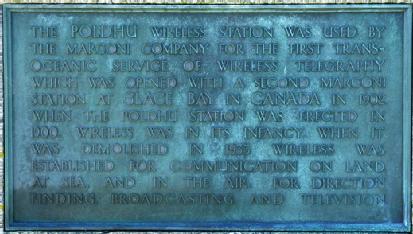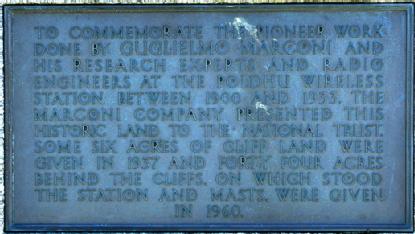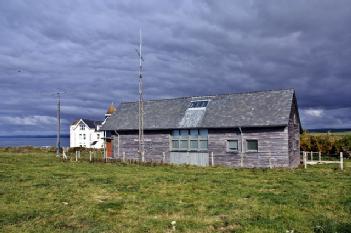
  |
The Marconi Centre and Monument at Poldhu |
TR12 7JB Mullion, Great Britain (UK) (Cornwall) |
|
| Address |
Poldhu Road
|
| Floor area | unfortunately not known yet |
Morse technology
- Amateur Radio / Military & Industry Radio
|
Opening times
|
October-April: Sunday: 13:30-16:30; Tuesday and Friday: 19:00-21:00 May, June, September: Tuesday, Friday: 13:30-16:30; Wednesday, Sunday: 19:00-21:00 July and August: Wednesday, Thursday and Sunday: 13:30-16:30 Bank Holidays (except Christmas, Boxing/St Stephen's and New Year's Days): 13:30-16:30 |
||||
|
Status from 12/2020
|
Free entry, donations expected. | ||||
| Contact |
|
||||
| Homepage | www.marconi-centre-poldhu.org.uk | ||||
| Location / Directions |
Mullion is a civil parish and village on the Lizard Peninsula in south Cornwall, England, United Kingdom. The nearest town is Helston approximately 5 miles (8 km) to the north. The 34 bus service runs from Redruth via Helston to Poldhu, terminating at the Lizard. The South West Coastpath runs close to the Centre. To access leave the path at the Marconi Monument and walk across to the Marconi Centre. |
| Description | Wikipdia: Marconi built the first antenna beginning April 1901 to transmit the first transatlantic radio message to Canada. It consisted of 20 thin wooden masts in a circle supporting 200 wires in an inverted cone shape attached to the transmitter building. When it blew down in a storm 17 September 1901 he hastily erected a temporary antenna consisting of 54 wires suspended in a fan shape from a cable between two 160 ft. poles, which was used in the actual transatlantic experiment. After the experiment in 1902 for permanent transatlanic service he built this antenna consisting of 200 wires in an inverted pyramid supported by four sturdy 210 ft (64 meter) lattice towers. The reason for the multiple wires of the antenna was to increase its capacitance to ground, to allow it to store more energy during each spark. An innovative 25 kilowatt inductively coupled spark gap transmitter in the station, designed by John Ambrose Fleming, produced radio waves probably at a frequency of about 850 kHz. |
[dsp_museum_detail.cfm]
| Data Compliance | More Information |







